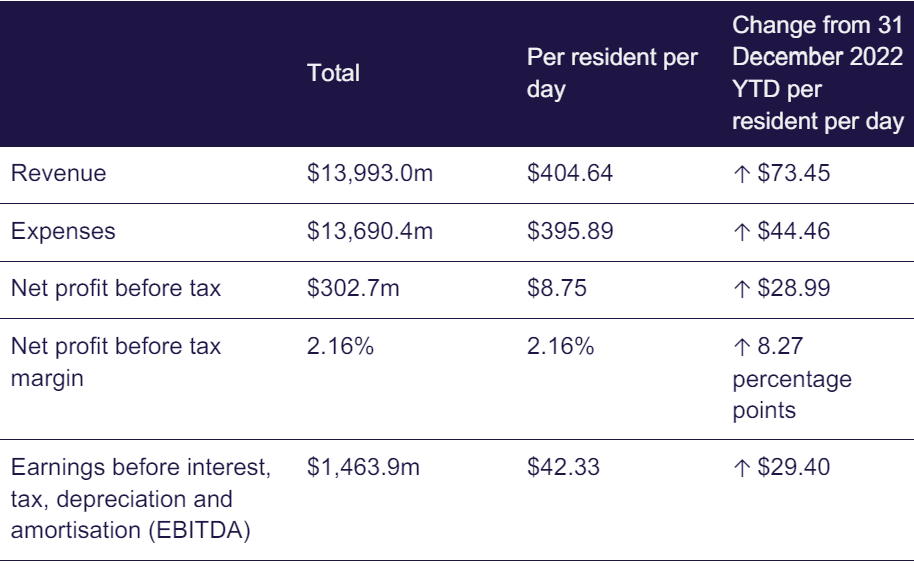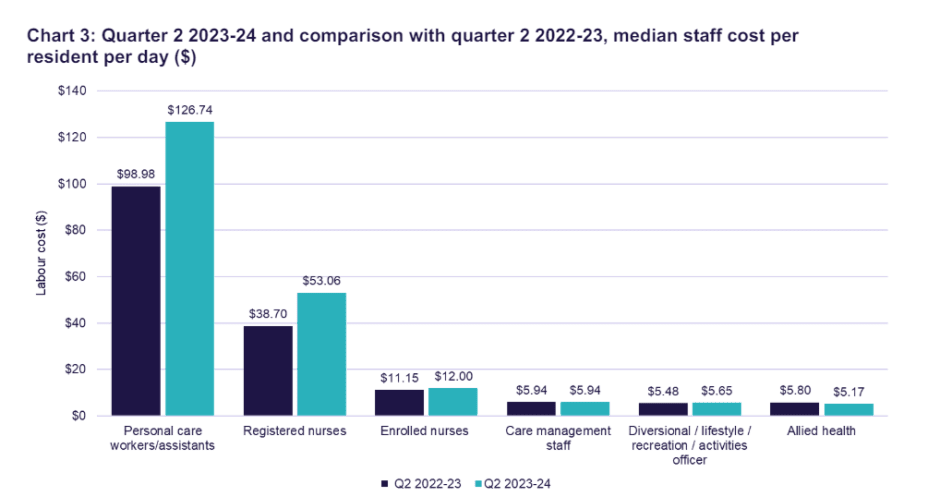The financial performance of residential aged care providers improved significantly from the comparable period last financial year, but when compared with the results of the previous quarter, the results appear weaker and could deteriorate further for the remainder of the year, according to the Department of Health and Aged Care's Quarterly Financial Snapshot.
In the six months to 31 December 2024, providers achieved on average $8.75 net profit before tax per resident per day, compared with a loss of $20.24 the previous year - an improvement of $28.99 per resident per day.
However, in the first quarter of 2023-24, the average net profit before tax was $10.36.

Though comparing a three-month period with six months, the financial situation of aged care providers weakened in the second quarter.
The report predicts results will continue to weaken for the remainder of the financial year as providers spend more to meet mandatory care minute targets, as a majority of providers still aren't meeting the targets.
"It is expected that expenses will continue to increase over the next two quarters as providers continue to increase their care minutes to meet their mandatory targets, which will impact the final NPBT position and final EBITDA position for 2023-24," the report states.
The report notes that For Profit providers are likely to be delivering stronger financial results because they are not meeting the mandatory care targets, using funding intended for care minutes on accommodation.
While providers increase their care minutes, "it will be vital for providers to ensure they are appropriately charging for accommodation rather than cross subsidising from funding provided for care," the report states, a trend also noted in the UARC report, out last week.
The Aged Care Taskforce recommendations should open up new avenues for funding for accommodation if they are taken up by the Government.
"The analysis shows the most important opportunity for improvement in the financial viability and sustainability of the sector is through providers pricing accommodation appropriately, which was a focus of the Aged Care Taskforce. This is also important as care funding becomes more efficient over time based on IHACPA’s recommendations and the care result is aligned to care costs," the report states.
Other highlights of the report include:
- there was a drop in agency costs and hours for PCWs and AINs, but an increase in agency costs and hours for RNs and ENs
- occupancy was 87.6%, up 1.8 percentage points on the previous year. No occupancy data was available for Q1 2023-24 as the Department was transitioning to new systems to collect the data for calculating occupancy
- the costs of RNs, PCWs, and AINs rose, while the costs of ENs, allied health staff, diversional/lifestyle staff, and care management staff all decreased (see main chart)
The report is available here.










